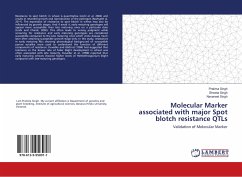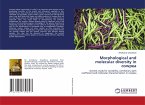Resistance to spot blotch in wheat is quantitative (Joshi et al. 2004) and results in retarded growth and reproduction of the pathogen (Bashyalet al. 2011). The expression of resistance to spot blotch in wheat may also be influenced by growth stages. And if avoid it, early maturing genotypes will appear more susceptible than late maturing ones on a particular date (Joshi and Chand, 2002). This often leads to wrong judgment while screening for resistance and early maturing genotypes are considered susceptible compared to the late maturing ones which invite disease much later after attaining susceptible growth stage only. In this study, resistances in early maturing RILs showing phonological background of susceptible parent sonalika were used to understand the function of different components of resistance. Duveiller and Gilchrist (1994) had suggested that tolerance or the slower rate of foliar blight development in wheat was often associated with late maturity. Duveiller et al. (1998) reported that early maturing wheats showed higher levels of Helminthosporium blight compared with late-maturing genotypes.







